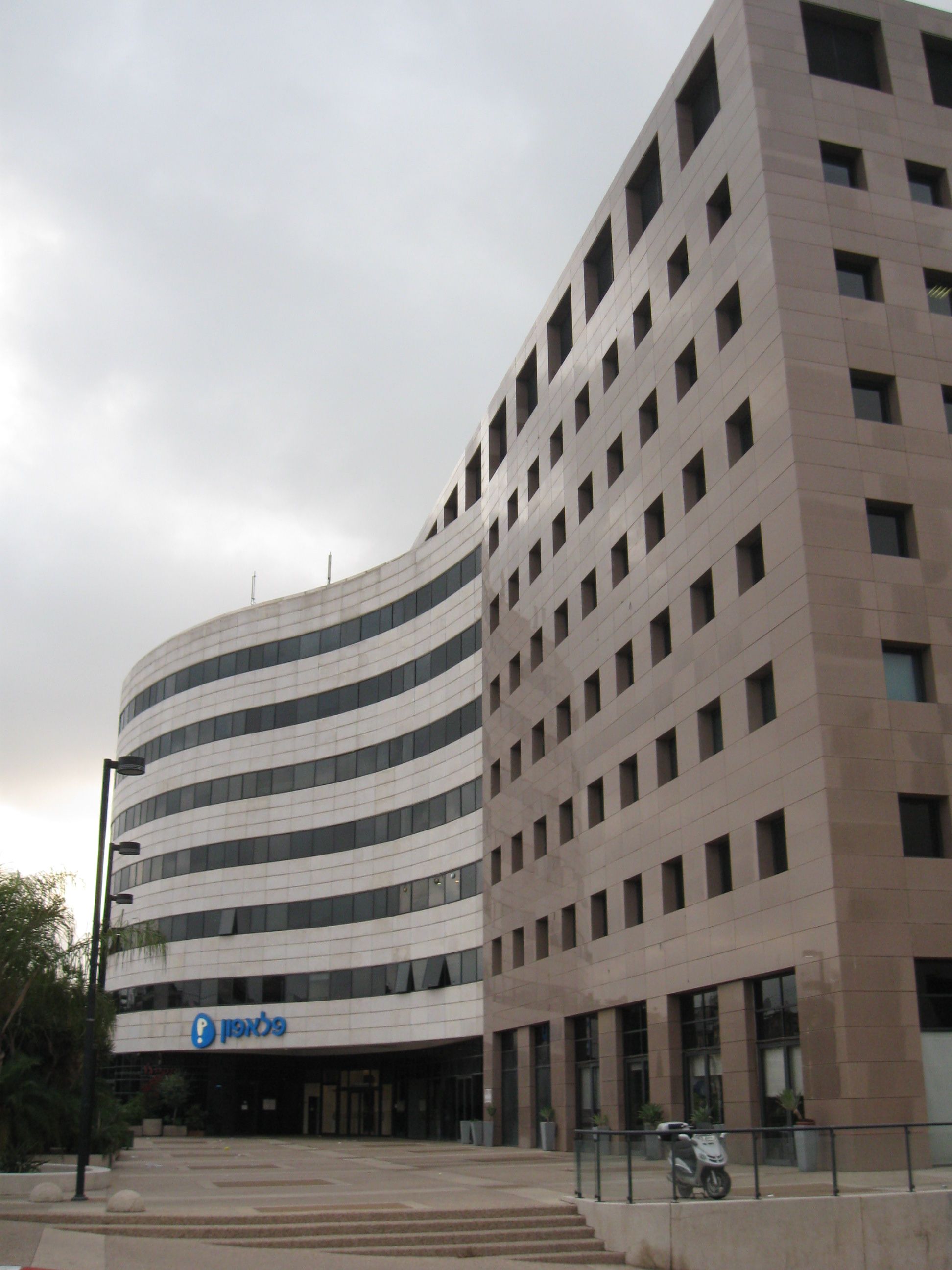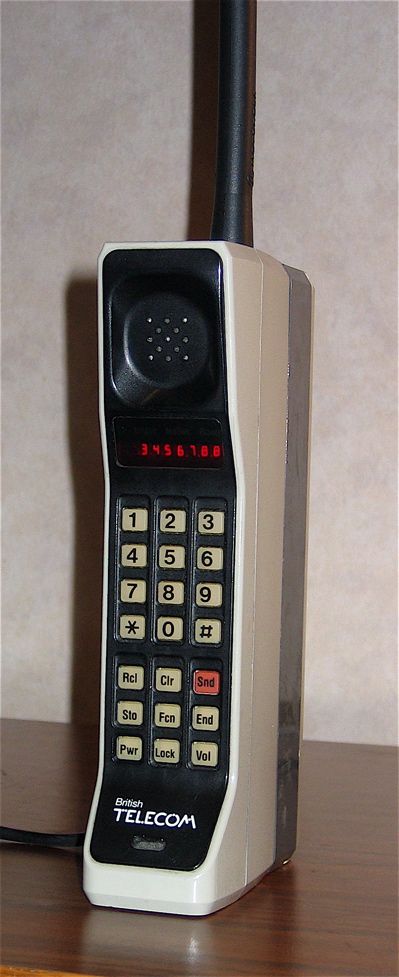|
Pelephone
Pelephone (, , lit. "miracle phone") is a mobile network operator in Israel, and also the first company to offer mobile telephony services in Israel. Due to this, the brand-name "Pelephone" became the genericized trademark A generic trademark, also known as a genericized trademark or proprietary eponym, is a trademark or brand name that, because of its popularity or significance, has become the generic term for, or synonymous with, a general class of products or ... for mobile phones in Israel, regardless of service provider. The company is a subsidiary of the Israeli telecommunications conglomerate Bezeq, which is also the principal provider of fixed-line telephone service in the country. As of June 2016 Pelephone had 2.26 million wireless subscribers. History Pelephone was founded as a company in 1985 as a joint venture between Motorola and Tadiran, after Motorola was awarded the contract to build Israel's first mobile phone network in November 1983. Pelephone began ope ... [...More Info...] [...Related Items...] OR: [Wikipedia] [Google] [Baidu] |
Rami Levy Communications
Rami Levy Communications () is a mobile virtual network operator in Israel, using the network from Pelephone. Founded in 2011, it is owned by Rami Levy Hashikma Marketing. The prefix assigned to Rami Levy Communications is 0556. History In September 2010, Rami Levy became the fourth company in Israel to receive a mobile virtual network operator license from the Israel Ministry of Communications. The company previously announced in a 2010 statement to the Tel Aviv Stock Exchange that upon receiving this license, it would open a new subsidiary, Rami Levy Hashikma Marketing Communications Ltd., and sell advanced mobile telephone services in its supermarkets. In February 2011 Rami Levy signed an agreement with the mobile network provider Pelephone, allowing the supermarket chain to use Pelephone's infrastructure to provide cellular phone services. In December 2011 Rami Levy Communications went live with the opening of two branches in Jerusalem. Rami Levy Communications is the firs ... [...More Info...] [...Related Items...] OR: [Wikipedia] [Google] [Baidu] |
List Of Mobile Network Operators Of The Middle East And Africa
This is a list of mobile network operators of the Middle East Algeria In Q3 of 2023, the penetration rate was estimated at 114.42% over a population estimate of 44.20 million. The telecom regulator in Algeria iAutorité de Régulation de la Poste et des Télécommunications(ARPT). Angola In September 2010 the penetration rate was estimated at 63.7% over a population estimate of 13.3 million. The telecom regulator in Angola is Instituto Angolano das Comunicações (INACOM). Bahrain At the end of 2011 the penetration rate was estimated at 133% over a population estimate of 1.27 million. The telecom regulator in Bahrain is Telecommunications Regulatory Authority of Bahrain (TRA). Benin In December 2015, the penetration rate was estimated at 90.33% (in 2014, the population was estimated as 10.33 millions). The telecom regulator in Benin is ''Autorité de régulation des communications électroniques et de la poste'' (ARCEP Benin). Botswana In March 2015 the penetra ... [...More Info...] [...Related Items...] OR: [Wikipedia] [Google] [Baidu] |
Bezeq
Bezeq () is an Israeli telecommunications company. Bezeq and its subsidiaries offer a range of telecom services, including fixed-line, mobile telephony, high-speed Internet, transmission, and pay TV (via Yes (Israel), Yes). The company is traded in the Tel Aviv Stock Exchange under the symbol BEZQ, and is part of the TA-35 Index, Tel Aviv 35 Index. History In the late 1980s Anat Hoffman founded a group to protect the interests of Bezeq customers. A major complaint was that Bezeq did not send customers itemized bills. 46 cases were brought to small claims court and the consumers won 43 of them. Within two years of the campaign. consumers began to receive itemized bills. In April 2012, Bezeq acquired full ownership of Walla! Communications Ltd, Walla! Communications, Israel's leading Internet portal, which has more than 2.5 million monthly unique users. In December 2020, Bezeq sold its 100% stake in Walla! Communications. Bezeq operates the B144 Directory assistance, directory ... [...More Info...] [...Related Items...] OR: [Wikipedia] [Google] [Baidu] |
Advanced Mobile Phone System
Advanced Mobile Phone System (AMPS) was an analog mobile phone system standard originally developed by Bell Labs and later modified in a cooperative effort between Bell Labs and Motorola. It was officially introduced in the Americas on October 13, 1983,Private Line and was deployed in many other countries too, including Israel in 1986, Australia in 1987, Singapore in 1988, and Pakistan in 1990. It was the primary analog mobile phone system in North America (and other locales) through the 1980s and into the 2000s. As of February 18, 2008, carriers in the United States were no longer required to support AMPS and companies ... [...More Info...] [...Related Items...] OR: [Wikipedia] [Google] [Baidu] |
Hebrew
Hebrew (; ''ʿÎbrit'') is a Northwest Semitic languages, Northwest Semitic language within the Afroasiatic languages, Afroasiatic language family. A regional dialect of the Canaanite languages, it was natively spoken by the Israelites and remained in regular use as a first language until after 200 CE and as the Sacred language, liturgical language of Judaism (since the Second Temple period) and Samaritanism. The language was Revival of the Hebrew language, revived as a spoken language in the 19th century, and is the only successful large-scale example of Language revitalization, linguistic revival. It is the only Canaanite language, as well as one of only two Northwest Semitic languages, with the other being Aramaic, still spoken today. The earliest examples of written Paleo-Hebrew alphabet, Paleo-Hebrew date back to the 10th century BCE. Nearly all of the Hebrew Bible is written in Biblical Hebrew, with much of its present form in the dialect that scholars believe flourish ... [...More Info...] [...Related Items...] OR: [Wikipedia] [Google] [Baidu] |
Genericized Trademark
A generic trademark, also known as a genericized trademark or proprietary eponym, is a trademark or brand name that, because of its popularity or significance, has become the generic term for, or synonymous with, a general class of products or services, usually against the intentions of the trademark's owner. A trademark is prone to genericization, or "genericide", when a brand name acquires substantial market dominance or mind share, becoming so widely used for similar products or services that it is no longer associated with the trademark owner, e.g., linoleum, bubble wrap, thermos, and aspirin. A trademark thus popularized is at risk of being challenged or revoked, unless the trademark owner works sufficiently to correct and prevent such broad use. Trademark owners can inadvertently contribute to genericization by failing to provide an alternative generic name for their product or service or using the trademark in similar fashion to generic terms. In one example, the Oti ... [...More Info...] [...Related Items...] OR: [Wikipedia] [Google] [Baidu] |
CDMA2000
CDMA2000 (also known as C2K or IMT Multi‑Carrier (IMT‑MC)) is a family of 3G mobile technology standards for sending voice, data, and signaling data between mobile phones and cell sites. It is developed by 3GPP2 as a backwards-compatible successor to second-generation cdmaOne (IS-95) set of standards and used especially in North America and South Korea. CDMA2000 compares to UMTS, a competing set of 3G standards, which is developed by 3GPP and used in Europe, Japan, China, and Singapore. The name CDMA2000 denotes a family of standards that represent the successive, evolutionary stages of the underlying technology. These are: *Voice: CDMA2000 1xRTT, 1X Advanced *Data: CDMA2000 1xEV-DO ( Evolution-Data Optimized): Release 0, Revision A, Revision B, Ultra Mobile Broadband (UMB) All are approved radio interfaces for the ITU's IMT-2000. In the United States, ''CDMA2000'' is a registered trademark of the Telecommunications Industry Association (TIA-USA). 1X CDMA200 ... [...More Info...] [...Related Items...] OR: [Wikipedia] [Google] [Baidu] |
CDMA
Code-division multiple access (CDMA) is a channel access method used by various radio communication technologies. CDMA is an example of multiple access, where several transmitters can send information simultaneously over a single communication channel. This allows several users to share a band of frequencies (see bandwidth). To permit this without undue interference between the users, CDMA employs spread spectrum technology and a special coding scheme (where each transmitter is assigned a code). CDMA optimizes the use of available bandwidth as it transmits over the entire frequency range and does not limit the user's frequency range. It is used as the access method in many mobile phone standards. IS-95, also called "cdmaOne", and its 3G evolution CDMA2000, are often simply referred to as "CDMA", but UMTS, the 3G standard used by GSM carriers, also uses "wideband CDMA", or W-CDMA, as well as TD-CDMA and TD-SCDMA, as its radio technologies. Many carriers (such as AT&T, U ... [...More Info...] [...Related Items...] OR: [Wikipedia] [Google] [Baidu] |
IS-95
cdmaOne, most often simply referred to as CDMA, is a 2G digital cellular technology. It was the commercial name for Interim Standard 95 (IS-95), a technology that was developed by Qualcomm and later adopted as a standard by the Telecommunications Industry Association in TIA/EIA/IS-95 release published in 1995. cdmaOne used code-division multiple access (CDMA), a multiple access scheme for digital radio, to send voice, data and signaling data (such as a dialed telephone number) between mobile telephones and cell sites. CDMA transmits streams of bits ( PN codes). CDMA permits several radios to share the same frequencies. Unlike time-division multiple access (TDMA), a competing system used in 2G GSM, all radios can be active all the time, because network capacity does not directly limit the number of active radios. Since larger numbers of phones can be served by smaller numbers of cell-sites, CDMA-based standards have a significant economic advantage over TDMA-based sta ... [...More Info...] [...Related Items...] OR: [Wikipedia] [Google] [Baidu] |
MVNO
A mobile virtual network operator (MVNO) is a wireless communications services provider that does not own the wireless network infrastructure over which it provides services to its customers. An MVNO enters into a business agreement with a mobile network operator (MNO) to obtain bulk access to network services at wholesale rates, then sets retail prices independently. An MVNO may use its own customer service, billing support systems, marketing, and sales personnel, or it could employ the services of a mobile virtual network enabler (MVNE). History MVNO agreements with network operators date back to the 1990s, when the European and Australian telecom markets saw market liberalization, new regulatory frameworks, better 2G network technology, and a subsequent jump in wireless subscriber numbers. Though the new 2G networks more efficiently managed the limited frequency bands allocated to wireless service, new mobile entrants were still limited by their ability to access frequency ... [...More Info...] [...Related Items...] OR: [Wikipedia] [Google] [Baidu] |
YouTube
YouTube is an American social media and online video sharing platform owned by Google. YouTube was founded on February 14, 2005, by Steve Chen, Chad Hurley, and Jawed Karim who were three former employees of PayPal. Headquartered in San Bruno, California, it is the second-most-visited website in the world, after Google Search. In January 2024, YouTube had more than 2.7billion monthly active users, who collectively watched more than one billion hours of videos every day. , videos were being uploaded to the platform at a rate of more than 500 hours of content per minute, and , there were approximately 14.8billion videos in total. On November 13, 2006, YouTube was purchased by Google for $1.65 billion (equivalent to $ billion in ). Google expanded YouTube's business model of generating revenue from advertisements alone, to offering paid content such as movies and exclusive content produced by and for YouTube. It also offers YouTube Premium, a paid subs ... [...More Info...] [...Related Items...] OR: [Wikipedia] [Google] [Baidu] |







